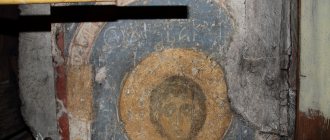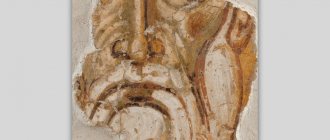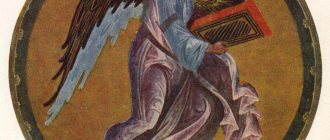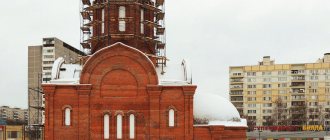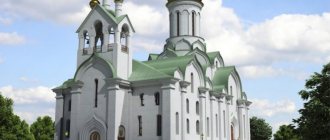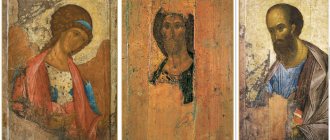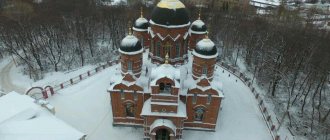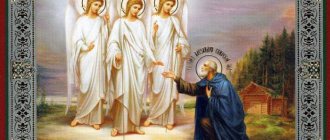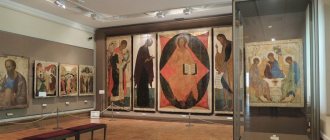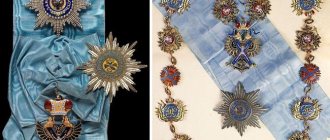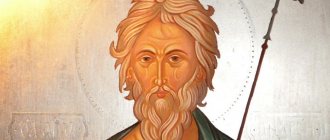The icons of Andrei Rublev are a mystery of Orthodox Rus'.
Very little is known about the life of St. Andrei Rublev in our time. There is little data, and they are often contradictory, which provides ample ground for debate among historians and art critics. The situation is exactly the same with the icons that are associated with Andrei Rublev. But the main thing is important: the Church honors the memory of St. Andrei Rublev precisely as a holy icon painter. And he honors the icons associated with his name. These icons speak louder than any words.
Andrei Rublev is one of the most mysterious people of his time. It is known that the years of his life coincided with a difficult period in Russian history - the invasion of the Tatar-Mongol yoke. But even in conditions of famine, deprivation, and the invasion of the Tatars, great works of painting were created that continue to delight our contemporaries.
There is very little documentary evidence left about Andrei Rublev. It is believed that he was born into a family of artisans. His work corresponded to the traditions of the Moscow principality. He painted the Annunciation Church in the Moscow Kremlin. Andrei Rublev died during a pestilence in 1482.
In our article we will look at the most important, most famous icons of the holy icon painter - the Trinity, the Zvenigorod Savior, Michael the Archangel and the Savior in Power!
One of the most famous works of Andrei Rublev is the Trinity icon. Her story is amazing. In 1422, a terrible famine struck Rus'. The icon depicts three angels sitting at a table. On the table they have a bowl with the head of a calf. Angels sit against the backdrop of an unusual landscape. This is a house, a tree and a mountain. The house is the chambers of Abraham, the tree is the Oak of Mamre, and the mountain is Mount Moriah. The Temple Mount or Mount Moriah towered over Jerusalem; it was there that the Jerusalem Temple stood, the site for which King David acquired from the Jebusite Aravna (Orna). The Mamre oak is the same tree under which Abraham met the Lord. Abraham met three angels of the Lord, who appeared to him under the guise of tired travelers. He invited them to rest in the shade of an oak tree. The oak tree still stands in its place. The biblical story “Hospitality of Abraham” is the basis of the icon. It most fully reveals the dogmatic teaching about the Holy Trinity. The unity of the Holy Trinity and the grace of Communion with God are revealed in the amazing work of Andrei Rublev, one of the few that definitely belonged to his brush. Although the figures of angels do not highlight individual hypostases of God, each angel has its own individuality. Andrei Rublev managed to succinctly and simply express the spiritual essence of the Holy Trinity, without forgetting about the trinity and consubstantiality of the Trinity. Therefore, at the Council of the Stoglavy (in Moscow, in 1551), it was decided to recognize Rublev’s icon as a model for painting the Holy Trinity. The authorship of “Trinity” is beyond doubt. Now this wonderful icon is in the hall of ancient Russian painting of the Tretyakov Gallery. A special cabinet has been created for it, maintaining the required level of humidity and temperature in order to preserve the unique work of art.
The next icon that I would like to talk about is the Zvenigorod Spas. Icon of the Savior Almighty, painted in 1410 -1420. Andrei Rublev, was an integral part of the seven-figure waist row - the Deesis rank. The Deesis rite is a series of images of saints standing in prayer before Christ placed in the center. Its semantic content is connected with the theme of the Last Judgment: the saints - the Mother of God, John the Baptist, archangels and apostles - ask Christ the Savior (Savior) for mercy on the human race.
This icon was discovered in 1918 in Zvenigorod under a pile of firewood in a barn. Only fragments of the Savior depicted on this icon have survived, but it shows the organic and multi-valued internal movement inherent in many of Andrei Rublev’s images.
With a wise, benevolent and gentle gaze, Rublev’s Savior penetrates directly into the soul of the beholder, conveying to him his state of thoughtful peace and tranquility. In contrast to the menacing, angry or sublimely detached images of the Almighty prevailing in pre-Rubble art, Rublev’s Savior is, first of all, human. His spiritual beauty, representing the embodiment of typically Russian good looks, reflects the ideal of a perfect person, full of philosophical wisdom, justice, kindness and selfless love.
Rublev's Spas is a work that had a huge influence on the artist's contemporaries, and on all subsequent generations of Russian people. He is lively, open, majestic, and at the same time there is a softness in him, in accordance with the Slavic type, he has medium-sized facial features framed by a light brown silky beard. The color scheme consists of golden, different shades of ocher, darkish light azure himation (on clothes). The facial expression combined with the color scheme creates the impression of wise calm. The painting on the surface of the board is poorly preserved; only a part with the image of the face of the Savior remains. But everything that has survived is so magnificent that this work is undoubtedly one of the masterpieces of ancient Russian art. The noble simplicity of the image of “Spas” and its monumental character are typical features of Rublev’s style. Unfortunately, only the upper part of the found icon was preserved; all the rest of the painting was lost, but everything that survived is so magnificent that this work is one of the masterpieces of ancient Russian art.
The second icon of the “Zvenigorod rank” was the image of Archangel Michael. His face, turned to the Savior, seems to echo him with thoughtful meekness and tranquility of his gaze. This image refers us to the Angels of the Holy Trinity, and not only in its humility, but also in its visual similarity - a long, flexible, slightly elongated neck, a cap of thick curls, a bowed head.
The formidable commander of the heavenly forces, the conqueror of evil and Satan himself, whom he cast into the bottomless abysses of hell, Michael the Archangel has long been depicted as a stern winged messenger in the armor of a warrior and with a weapon in his hands - a spear or sword. His winged figure, cast from copper or silver, adorned military helmets to intimidate enemies. He was revered as the patron of the Orthodox army fighting for a just cause. Severity and severity were given to this image in the minds of people of that time by the idea that Michael escorted the souls of the dead to the abodes prepared for them, creating the truth and protecting the human soul from dark demonic power. Therefore, cemetery churches were dedicated to him - from a rural churchyard lost in the wilderness to the Grand Duke's Archangel Cathedral - the tomb of the capital city.
In Rublev, the meek and self-absorbed light-haired archangel, with his curly head gently bowed, is not involved in evil. A fighter against evil, he did not “take advantage” of it, did not become like a hostile element. Rublev saw the “Archangel of the heavenly hosts” as a kind guardian angel of all things. In this decision of the image there is a mature thought that has long become close to Rublev: the fight against evil requires the greatest heights, absolute immersion in goodness. Evil is terrible not only in itself, but also because, causing the need to resist it, it gives birth to its germ in good itself. And then, in the shell of truth and under its banner, the same evil is reborn in a different form, and “the last is worse than the first.” Here, solving for himself the eternal question of good and evil as incommensurable, non-contacting principles, Rublev, as it were, founded a tradition that has never become scarce in the Russian culture of the future. He also appears in this work as an artist-thinker who brings what he has gained from his experience to people.
Something fresh, youthful, morning permeates the very image of the archangel, mood, color. The bright expression of wide eyes, the tenderness of a softly rounded, pinkish glowing face. Elastic waves of curly hair, soft hands. Sky-azure and pink, like dawn, clothes, warm glow of golden wings. An azure headband holding his wavy, soft hair ends in flowing ribbons behind his head. They were called in the Old Russian language “toroks”, or “rumors”, and denoted the property of angels - the worthy hearing of the higher will, connection with it. Another symbol enhances this meaning and helps to more clearly understand the meaning of that subtle, profound expression that Rublev conveyed to the face of his Mikhail.
And there is one more icon by Andrei Rublev, which I would like to talk about separately - the Savior is in power. It was written by Andrei Rublev in 1408. and is one of his most famous and mysterious works. The icon is made in the Byzantine style. Now it is also in the Tretyakov Gallery.
Jesus Christ, ruler of the visible and invisible world, is depicted in all his glory, surrounded by angelic heavenly forces. This is how the holy prophets Ezekiel and John the Theologian saw the Lord in their wonderful visions. With his right hand He blesses all living things on earth, and in his left hand He holds the book of life, where the names of all people who have reached the kingdom of heaven are written. It is also interpreted that this could be a book of the old and new testaments or a book of revelations.
Around the savior there are geometric figures: the blue oval is the celestial sphere, the heavenly world of angels; a red square with elongated ends represents the earth; The red diamond symbolizes the fiery radiance of God's glory. At the ends of the red square there are animals, symbolically representing the four evangelists preaching the word of God throughout the world. An angel is a symbol of the Evangelist Matthew and denotes the incarnation of God into man. The lion is a symbol of Mark and represents the royal power of the son of God. Taurus is a symbol of Luke and denotes the sacrifice of the Savior. The eagle is a symbol of John the Evangelist and depicts a spiritual vision.
The pitted edges of the icon, lost over time, and the uneven dark wood, exposed in places, do not interfere with the complete perception of the image and contrasts with the freshness of the bright colors. The face of the Savior, glowing with transparent reflections, is full of life, painted tenderly and lightly. The movement of the head and neck is natural and speaks volumes about how skillfully the artist paints the human image. The golden shading of the clothing and the shining golden background have been preserved...
I would like to note that there are no such icons as Andrei Rublev’s anywhere else! These are amazing images, and he could only achieve such a language by leading a real monastic life! The icons of the great master evoked reverent surprise and admiration of both his contemporaries and subsequent generations. The name of Rublev was so famous, according to N.M. Karamzin that “his icons served as a model for all other painters for one hundred and fifty years.” During the life of the icon painter and after his death, people searched for his icons, exchanged them, bought them, and collected them. We are very lucky that now we have the opportunity to see the works of the great master with our own eyes!
We also remind you that the Orthodox Icons store offers copies of the famous icons of Andrei Rublev on a linden board and on linen canvas! An Orthodox icon is a window into the spiritual world. God bless you!
Story
The construction of the original building of the Assumption Cathedral began under Prince Andrei Bogolyubsky in 1158. The architects of that time conceived the building as the most important temple of the Vladimir-Suzdal principality and Rus'. Architects from Greece, Galich and Kyiv, as well as German masters, worked on it. Therefore, during construction, the foreign policy relations of Prince Andrei Bogolyubsky also strengthened.
Gradually the cathedral was transformed, and paintings were carried out in it. However, in 1185 it was significantly damaged by fire and required restoration. At that time, Vsevolod III was the prince, and he also decided to significantly expand the building, as a result of which it had additional side galleries, as well as four small chapters. In addition, additional arches were built and the interior space of the temple was increased.
In 1238, the city of Vladimir was taken by the troops of Khan Batu, and the Grand Duchess and Bishop Mitrofan locked themselves in the building. Everyone inside the Assumption Cathedral died as the Mongols set the cathedral on fire. Later, the grand-ducal family and the deceased Agafya Vsevolodovna and her children were canonized as Vladimir martyrs.
The next renovation of the Assumption Cathedral was carried out by order of Catherine II in 1767. The process was carried out in the spirit of that time and primarily affected the iconostasis - the Rublev style was replaced by the Baroque. At the same time, over the course of two centuries, the appearance of the building gradually changed and a bell tower was erected. Restoration of the cathedral in Vladimir was carried out in the twentieth century. The largest one was carried out in the 70-80s, during which the domes were covered with gold and white stone with a special composition. At the same time, the internal climate conditions were improved, and the frescoes were updated.
The beginning of a creative journey
In the biography of Andrei Rublev, creativity and his first works as an artist are mentioned for the first time in 1405, when he, having moved to Moscow, together with Theophan the Greek, began painting the Annunciation Cathedral. The fate of the cathedral was tragic: 9 years later it was destroyed and then rebuilt several times. But some works were miraculously preserved: these are 2 tiers of the iconostasis, in which there are 7 icons made by Andrei Rublev, and 6 by Elder Prokhor of Gorodets, a famous master of icon painting of those times.
Already in these works, the hand of the master is noticeable, freer and lighter compared to Elder Prokhor, but already highly professional. This series of holiday icons is the first in Rus': “Annunciation”, “Nativity of Christ”, “Baptism”, “Transfiguration”, etc.
During these years, Rublev also painted an icon-copy of “The Mother of God of Vladimir” from a famous Byzantine image, as well as a drawing from the book “The Gospel of Khitrovo”, which received its name from the name of the boyar, in whose belongings it was found in the 17th century. According to art historians, this manuscript, which has no value, in those years could only have been created with the money of either the Metropolitan of Rus' or one of the great princes.
Childhood, adolescence, monasticism
Andrei Rublev was born in the 60s of the 14th century; the exact place of birth is also unknown. According to some sources, he was born in the town of Radonezh, located next to the Trinity-Sergius Lavra, according to others - in Nizhny Novgorod. His father was a craftsman, as can be judged by his last name, because in those days a ruble was called a tool for working with leather. According to some sources, in his youth he became a novice of the Trinity-Sergius Monastery, and then a monk, receiving the name Andrei upon tonsure (his exact name is unknown).
The biography of icon painter Andrei Rublev originates within these walls, where he begins to learn the art of icon painting and studies the works on philosophy of Sergius of Radonezh, the founder of the monastery. There, visiting the monastery library, he carefully and with great zeal studies the works of the masters and artists of antiquity who painted icons.
The end of the 14th century became a difficult time for the Russian state: in 1364-1366 the plague raged in Moscow, and in 1365 there was a fire that destroyed almost the entire city. Then, in 1371, Moscow was besieged by Prince Olgerd, after which famine came to these lands.
Construction
Initially, the Assumption Cathedral was six-domed, three-apsed, and was built from high-quality white stone. According to excavations, it had three porches, and the basement was built with a non-profiled casting. After the fire, in 1185, Prince Vsevolod the Big Nest enlarged the altar part, and four additional chapters were added in the corners. Thanks to the reconstruction, the Assumption Cathedral gained greater capacity. Almost in this form, without taking into account restorations, the building has survived to this day.
In all its splendor and grandeur!
The cathedral turned out to be truly grandiose. It could accommodate two thousand people at the same time! After the scaffolding was removed from the cathedral, all the people gasped! Its main dome sparkled with gold and towered no less than the St. Sophia Cathedral in Kyiv! Rich bas-reliefs of stone walls were decorated with women's and lion masks, monograms and church scenes: “Three Youths in the Fiery Cave”, “Forty Martyrs of Sebaste”, “The Ascension of Alexander the Great”.
The floor of the temple was covered with copper sheets shining like gold! For many miles around it sparkled with its domes and seemed to tower above the rest of the city. The variety of gold and silver utensils decorated with precious stones was simply unimaginable! Chroniclers compared the Assumption Cathedral in beauty and grandeur with the Jerusalem Temple of King Solomon. With its construction, the Assumption Cathedral determined the course of development of white stone architecture in Rus' for a long time to come.
How to get to the Assumption Cathedral in Vladimir
Today, the Assumption Cathedral is visited as one of the main attractions of the city, but services continue there to this day, which are also possible to attend. The building is located at the address: Vladimir, Bolshaya Moskovskaya street, 56. If necessary, representatives of the cathedral can be contacted at +7 (4922) 32‑52-01 and e-mail: [email protected]
Opening hours: from 7 am to 20 pm, closed on Monday.
You can get to the temple by bus No. 12C, No. 15, No. 22, No. 25, No. 26 or No. 28, as well as by trolleybus No. 1 or No. 5. Stop – “Cathedral Square”.
